Hyundai Kona vs Mazda 2 – Which one offers the better deal?
Compare performance, boot capacity, efficiency and price at a glance.
Find out which car is the better choice for you – Hyundai Kona or Mazda 2?
Here’s where it gets real: The technical differences in detail
Costs and Efficiency: Price and efficiency are key factors when choosing a car – and this is often where the real differences emerge.
Mazda 2 has a decisively advantage in terms of price – it starts at 14200 £, while the Hyundai Kona costs 23100 £. That’s a price difference of around 8837 £.
Fuel consumption also shows a difference: the Hyundai Kona manages with 4.60 L and is therefore hardly perceptible more efficient than the Mazda 2 with 4.70 L. The difference is about 0.10 L per 100 km.
Engine and Performance: Under the bonnet, it becomes clear which model is tuned for sportiness and which one takes the lead when you hit the accelerator.
When it comes to engine power, the Hyundai Kona has a convincingly edge – offering 218 HP compared to 115 HP. That’s roughly 103 HP more horsepower.
In acceleration from 0 to 100 km/h, the Hyundai Kona is to a small extent quicker – completing the sprint in 7.80 s, while the Mazda 2 takes 9.10 s. That’s about 1.30 s faster.
In terms of top speed, the Hyundai Kona performs barely noticeable better – reaching 210 km/h, while the Mazda 2 tops out at 200 km/h. The difference is around 10 km/h.
There’s also a difference in torque: the Hyundai Kona pulls convincingly stronger with 265 Nm compared to 151 Nm. That’s about 114 Nm difference.
Space and Everyday Use: Whether family car or daily driver – which one offers more room, flexibility and comfort?
Both vehicles offer seating for 5 people.
In curb weight, the Mazda 2 is noticeable lighter – 1099 kg compared to 1370 kg. The difference is around 271 kg.
In terms of boot space, the Hyundai Kona offers noticeable more room – 466 L compared to 280 L. That’s a difference of about 186 L.
In maximum load capacity, the Hyundai Kona performs evident better – up to 1300 L, which is about 350 L more than the Mazda 2.
When it comes to payload, Hyundai Kona slightly takes the win – 490 kg compared to 437 kg. That’s a difference of about 53 kg.
Our conclusion: The Hyundai Kona proves to be wins the duel decisively and thus becomes our DriveDuel Champion!
Overall, Hyundai Kona is the better all-rounder in this comparison.
Hyundai Kona
The Hyundai Kona blends a bold design with a versatile interior, making it a standout choice in the compact SUV market. Its crisp handling and responsive steering provide an engaging driving experience, whether in the city or on the open road. The vehicle also offers a range of features designed to enhance comfort and connectivity, ensuring a pleasurable journey for both driver and passengers.
details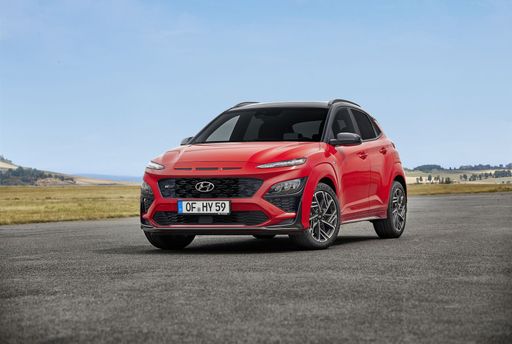 @ hyundai.news
@ hyundai.news
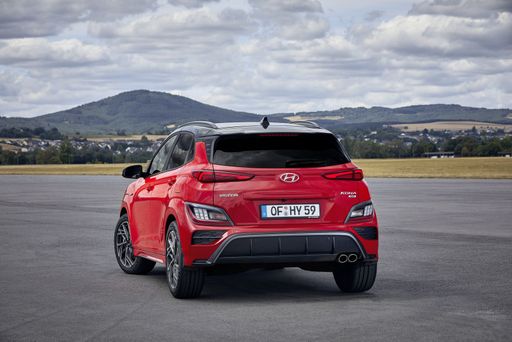 @ hyundai.news
@ hyundai.news
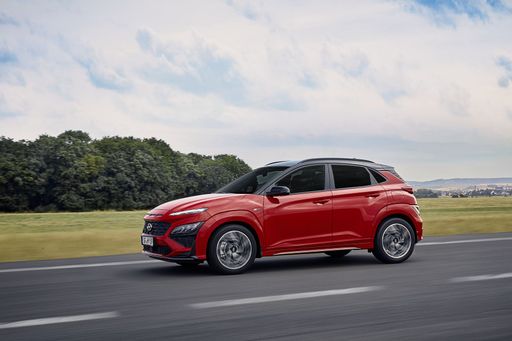 @ hyundai.news
@ hyundai.news
 @ hyundai.news
@ hyundai.news
Mazda 2
Toyota's compact and efficient Yaris has made quite a buzz in the automotive world with its sleek design and impressive fuel economy. Known for its reliability and affordability, the Yaris is a popular choice among city dwellers and young drivers who seek a practical yet stylish ride. Inside, the Yaris offers a surprisingly spacious interior with modern technology that caters to the everyday needs of its passengers.
details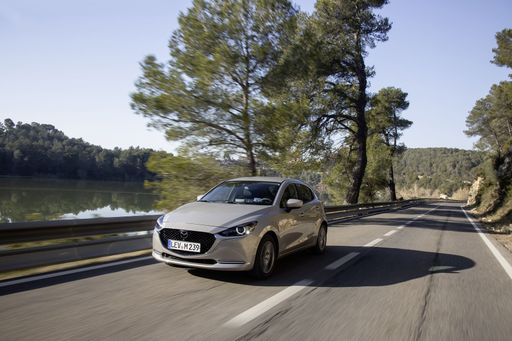 @ de.mazda-press.com
@ de.mazda-press.com
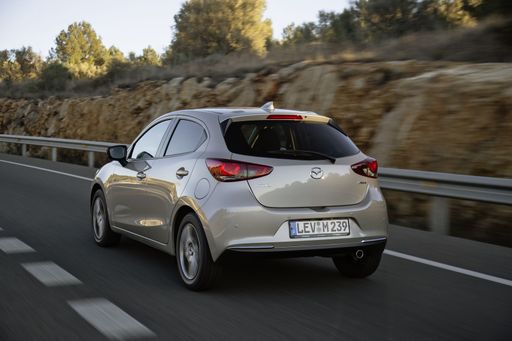 @ de.mazda-press.com
@ de.mazda-press.com
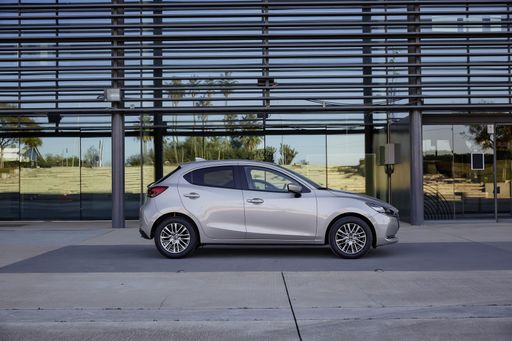 @ de.mazda-press.com
@ de.mazda-press.com
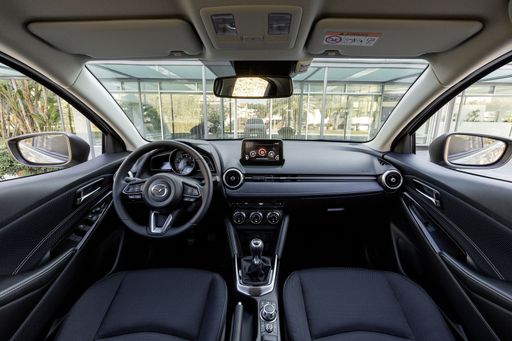 @ de.mazda-press.com
@ de.mazda-press.com
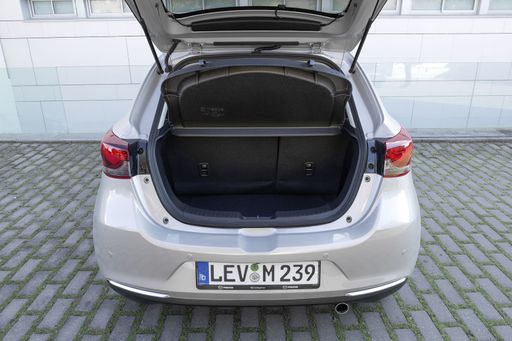 @ de.mazda-press.com
@ de.mazda-press.com

|

|
|
|
|
Costs and Consumption |
|
|---|---|
|
Price
23100 - 41600 £
|
Price
14200 - 21700 £
|
|
Consumption L/100km
4.6 - 7 L
|
Consumption L/100km
4.7 - 5.4 L
|
|
Consumption kWh/100km
14.6 - 16.8 kWh
|
Consumption kWh/100km
-
|
|
Electric Range
377 - 514 km
|
Electric Range
-
|
|
Battery Capacity
1.3 - 65.4 kWh
|
Battery Capacity
-
|
|
co2
0 - 163 g/km
|
co2
107 - 122 g/km
|
|
Fuel tank capacity
38 - 47 L
|
Fuel tank capacity
44 L
|
Dimensions and Body |
|
|---|---|
|
Body Type
SUV
|
Body Type
Hatchback
|
|
Seats
5
|
Seats
5
|
|
Doors
5
|
Doors
5
|
|
Curb weight
1370 - 1773 kg
|
Curb weight
1099 - 1120 kg
|
|
Trunk capacity
466 L
|
Trunk capacity
280 L
|
|
Length
4350 - 4385 mm
|
Length
4080 mm
|
|
Width
1825 mm
|
Width
1695 mm
|
|
Height
1580 - 1585 mm
|
Height
1515 mm
|
|
Max trunk capacity
1300 L
|
Max trunk capacity
950 L
|
|
Payload
420 - 490 kg
|
Payload
420 - 437 kg
|
Engine and Performance |
|
|---|---|
|
Engine Type
Electric, Petrol, Full Hybrid
|
Engine Type
Petrol MHEV, Petrol
|
|
Transmission
Automatic, Manuel
|
Transmission
Manuel, Automatic
|
|
Transmission Detail
Manual Gearbox, Dual-Clutch Automatic
|
Transmission Detail
Manual Gearbox, Automatic Gearbox
|
|
Drive Type
Front-Wheel Drive, All-Wheel Drive
|
Drive Type
Front-Wheel Drive
|
|
Power HP
115 - 218 HP
|
Power HP
75 - 115 HP
|
|
Acceleration 0-100km/h
7.8 - 11.9 s
|
Acceleration 0-100km/h
9.1 - 12.1 s
|
|
Max Speed
162 - 210 km/h
|
Max Speed
171 - 200 km/h
|
|
Torque
200 - 265 Nm
|
Torque
143 - 151 Nm
|
|
Number of Cylinders
3 - 4
|
Number of Cylinders
4
|
|
Power kW
85 - 160 kW
|
Power kW
55 - 85 kW
|
|
Engine capacity
998 - 1598 cm3
|
Engine capacity
1496 cm3
|
General |
|
|---|---|
|
Model Year
2024 - 2025
|
Model Year
2023
|
|
CO2 Efficiency Class
A, D, C, E, F
|
CO2 Efficiency Class
C, D
|
|
Brand
Hyundai
|
Brand
Mazda
|
Is the Hyundai Kona offered with different drivetrains?
Available configurations include Front-Wheel Drive or All-Wheel Drive.
The prices and data displayed are estimates based on German list prices and may vary by country. This information is not legally binding.
